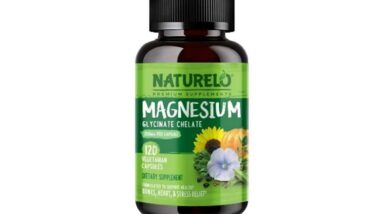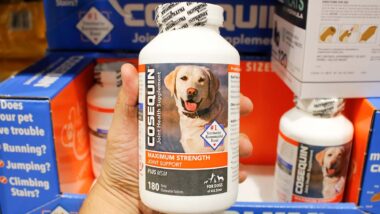Top Class Actions’s website and social media posts use affiliate links. If you make a purchase using such links, we may receive a commission, but it will not result in any additional charges to you. Please review our Affiliate Link Disclosure for more information.

The company that was once worth more than $9 billion was dissolved last September after its founder Elizabeth Holmes was indicted on nine counts of wire fraud and two counts of conspiracy.
Let’s take a look at Theranos scandal timeline and where Elizabeth Holmes is now.
Theranos Elizabeth Holmes: Background
At 19-years-old, most individuals are struggling to decide where they want to take their life. Some may be in college pursuing a higher education while others are entering the workforce to start their careers. Regardless, very few individuals in their final teenage year undertake the massive task of starting their own company.
One exception is the creator of Theranos Elizabeth Holmes. At 19 years of age, Holmes started Theranos. The name of the company combines the words “therapy” and “diagnosis.” Her goal was to create revolutionary new blood testing procedures that made the diagnostic tools cheaper and more convenient.
Timeline of Theranos
A timeline of the company may help individuals understand what went wrong and how a Steve Jobs-inspired entrepreneur ended up losing her company.
Within a year of creating Theranos, Holmes drops out of Stanford and starts to build her company on claims that she could develop a test that used only a few drops of blood to detect illnesses and health problems.
With this ambitious sales pitch, Holmes secured wealthy investors such as Henry Kissinger, Betsy DeVos, and Rupert Murdoch.
By 2007, Theranos was valued at $197 million after three years of securing investors and fundraising.
In 2010, creator of Theranos Elizabeth Holmes filed a U.S. Securities and Exchange Commission form disclosing that the company had raised $45 million through securities. At this point, Theranos value skyrocketed to $1 billion.
After years of keeping a low profile, Theranos revealed its website and products to the public in 2013. Later that year, the company announced that a deal with Walgreens would commercialize Theranos tests and make them available to the general public.
By 2014, the value of Theranos exceeded $9 billion, making 50 percent shareholder Elizabeth Holmes a multi-billionaire. In this same year, Holmes delivers a TED Talk about her company and her experiences as a young entrepreneur.
2015 was another big year for Theranos. During this year, Vice President Joe Biden toured the company’s facilities and remarked afterwards, “Talk about inspirational, this is inspirational.”
Around the same time, Theranos cleared a large regulatory hurdle when the FDA approved the company’s test to detect herpes simplex virus 1.
Things seemed to be looking positively for Theranos, but the future would soon prove otherwise.
What is the Theranos Scandal?
Like Icarus flying too close to the sun, Theranos’ quick rise to success was unfortunately met with resounding failure.
As early as 2014, founder of Theranos Elizabeth Holmes drew scrutiny for her vague explanations of the testing technology. Even after the company’s first test gained FDA approval, significant individuals were unsure about the company’s technology.
In October 2015, this scrutiny came to a head when The Wall Street Journal published a revealing report on the company. Ex-employees provided testimonies that Theranos management was incompetent and was deceiving the company by overstating the capabilities of the testing technology.
Holmes responded to these allegations with strident denials, providing more than 1,000 documents in an attempt to disprove The Wall Street Journal’s narrative.
At the time, she said “This is what happens when you work to change things. First, they think you’re crazy, then they fight you, and then all of a sudden you change the world.”
However, The Wall Street Journal was not about to let up. One day after its initial release, the news source followed up with a report that Theranos used an unapproved nanotainer for its blood tests but was ordered to cease this behavior. A nanotainer is a small vial used to collect blood.
Shortly after the exposé, the FDA released a report of its ongoing investigation into Theranos equipment. The report stated that the company used “uncleared medical device” that was “not validated under actual or simulated use conditions.”
The Wall Street Journal was not quite done reporting the truth of the Theranos scandal. In December 2015, the news source reports that the company rigged their testing in order to produce favorable results that supported their technology.
In 2016, the Centers for Medicare and Medicaid Services (CMS) cited Theranos after an inspection of one of its labs in Newark, Calif. The inspection reportedly found that the blood testing facility “comply with certificate requirements and performance standards” which caused “immediate jeopardy to patient health and safety.”
These claims eventually resulted in a 2017 settlement with CMS. Under the terms, Theranos was hit with a $30,000 penalty and agreed to retreat from the blood testing business for two years.
As soon as the unfavorable Theranos news began, Theranos’ deals with companies and investors began to fall through. Deals with Safeway and Walgreens were suspended or canceled.
Theranos investor Partner Management Fund (PFM) reached a settlement with the company after accusing Theranos of securities fraud.
Consumers also took legal action against the blood testing company. In 2016, a consumer class action lawsuit claimed that Theranos’ blood tests failed to provide accurate results.
Another proposed class action lawsuit was filed against the company around the same time, claiming that Theranos defrauded consumers and put them at risk.
Eventually, Theranos agreed to pay $4.65 million to Arizona’s Attorney General to settle claims against them in that state.
However, the Theranos scandal was not quite over yet. In 2018, Theranos was charged with fraud by the U.S. Securities and Exchange Commission (SEC).
The SEC claimed that Holmes and Ramesh Balwani, former Theranos president and Holmes’ ex-boyfriend, committed fraud by “raising more than $700 million from investors through an elaborate, years-long fraud in which they exaggerated or made false statements about the company’s technology, business, and financial performance.”
Later, both Holmes and Balwani were indicted by a federal grand jury on two counts of conspiracy and nine counts of wire fraud.
The grand jury determined that they had “engaged in a multi-million dollar scheme to defraud investors, and a separate scheme to defraud doctors and patients.”
Following years of blows to the company’s finances and reputation, Theranos was forced to close in September 2018.
Although this may seem like the end of the line for Theranos, Holmes may be forced to take further liability for her failed company.
As of January 2019, the U.S. Justice Department is reportedly reviewing nearly 17 million pages of evidence regarding the case against Holmes and Balwani.
Theranos Elizabeth Holmes: Odd Behavior & Where She Is Now
The Theranos news and Theranos documentary have drawn attention to Holmes’ oddball behavior, such as her tendency to not blink.
During interviews in the documentary, Holmes reportedly seems to be staring down the camera and blinks far less than the average person.
Some theorize that this may have a connection to telling lies. Dr. Alisia Ruby Bash told Women’s Health Magazine that “Research has shown that blinking helps determine whether someone is lying or not.”
“Liars blink less frequently during their lies, and then tend to speed up when they’ve finished lying,” Dr. Bash states.
When Holmes is asked “Can you tell us a secret?” in the Theranos documentary, can viewers look at her rapid blinking followed by a steady stare and deduce that she is lying when she says, “I don’t have many secrets?”
Or is Holmes just an odd individual with strange blinking patterns? Viewers can decide for themselves what they believe of the failed entrepreneur.
With attention brought to the case by HBO’s recent Theranos documentary “The Inventor: Out For Blood In Silicon Valley,” many may be wondering where Holmes is now.
While facing criminal charges for fraud, Holmes reportedly awaits her trial while living in a luxury apartment in San Francisco, according to Yahoo.
Attorneys for Holmes continue to argue that the 35-year-old likely believed wholeheartedly in her blood testing technology.
The criminal charges against Holmes could take years to resolve, especially considering the millions of documents being investigated by the Department of Justice. However, the public will be keeping an eye on any Theranos news and its resolution.
ATTORNEY ADVERTISING
Top Class Actions is a Proud Member of the American Bar Association
LEGAL INFORMATION IS NOT LEGAL ADVICE
Top Class Actions Legal Statement
©2008 – 2024 Top Class Actions® LLC
Various Trademarks held by their respective owners
This website is not intended for viewing or usage by European Union citizens.














